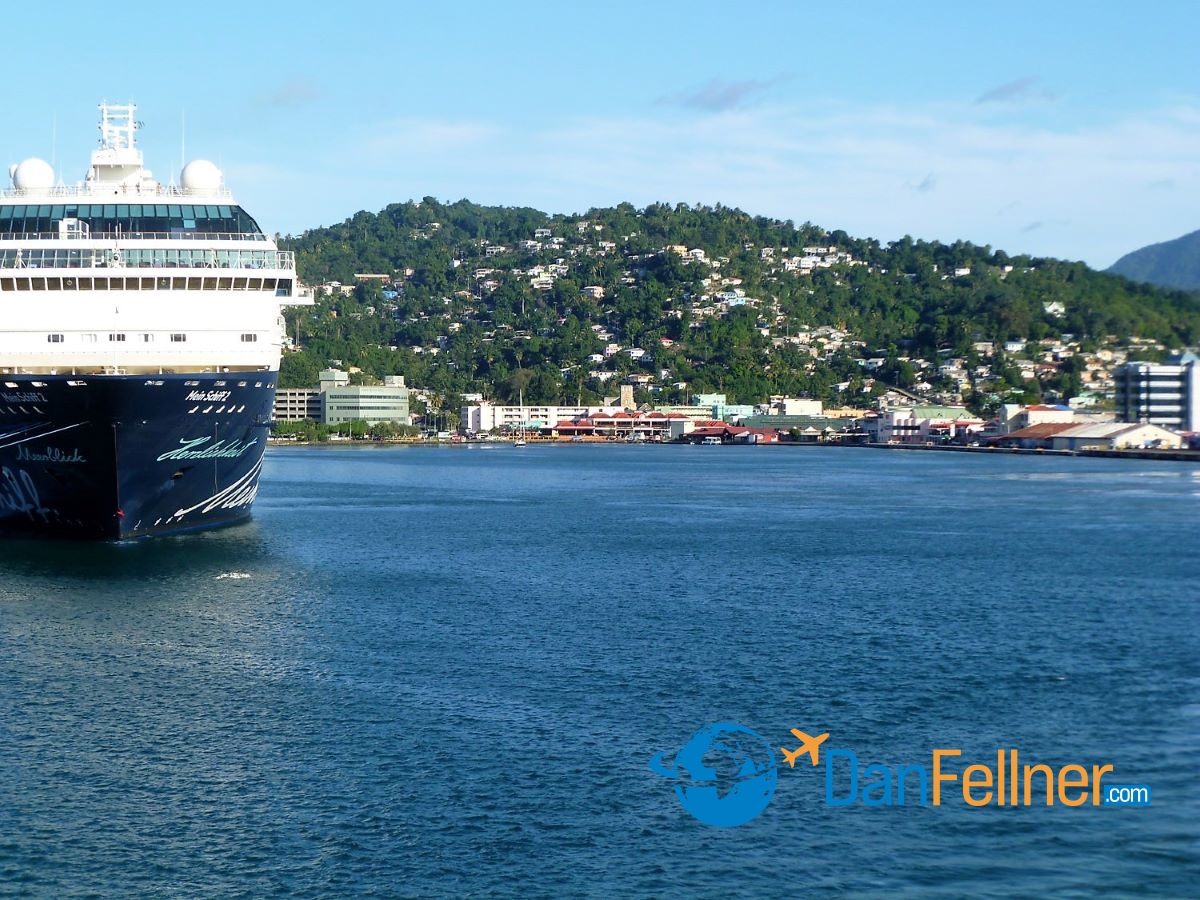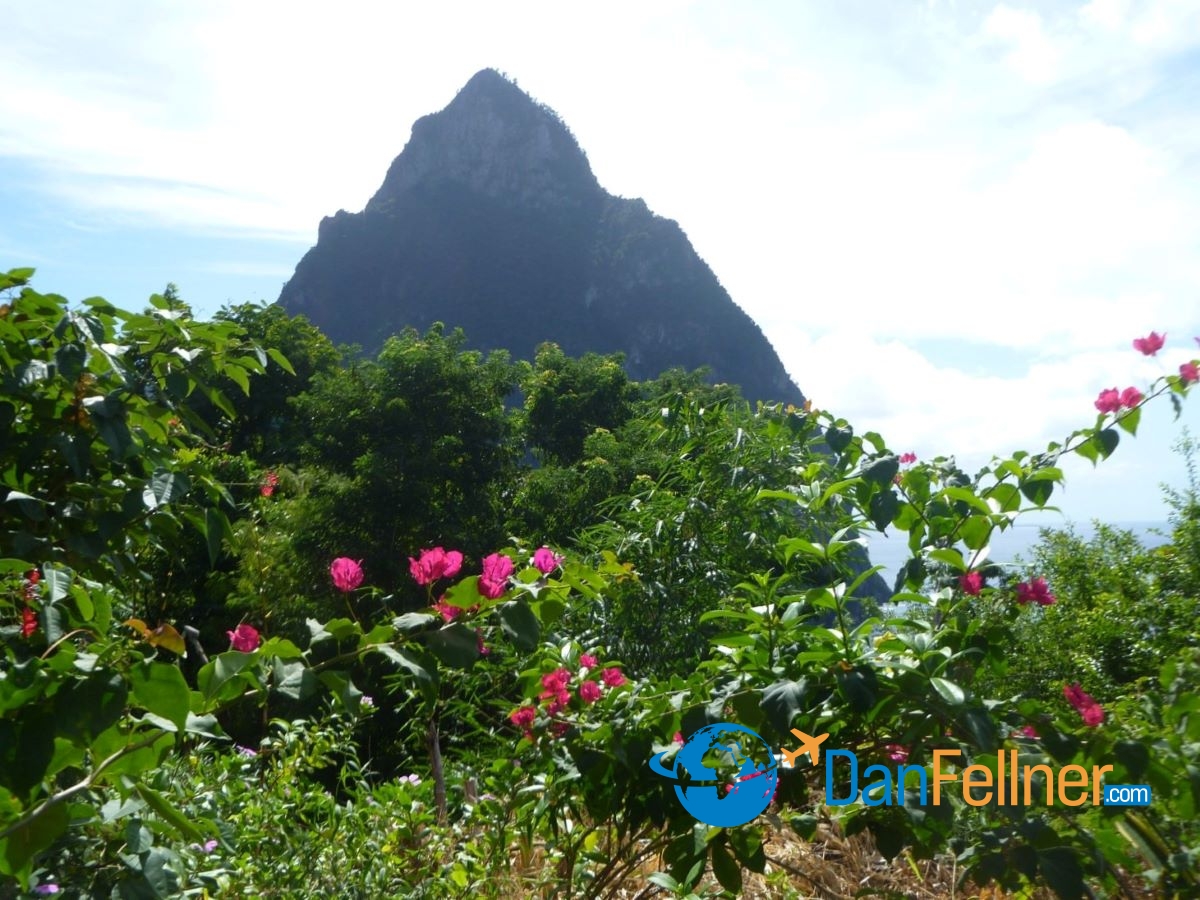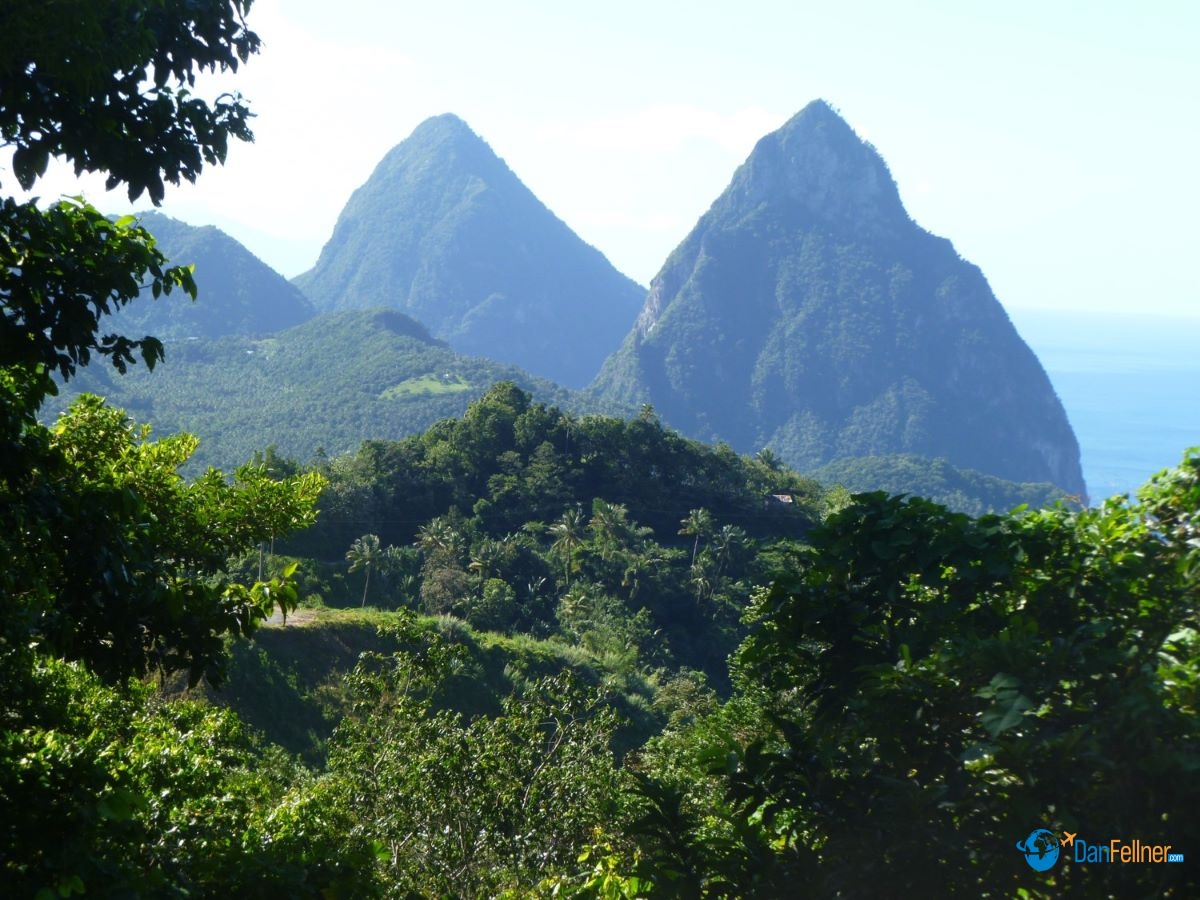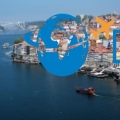Island boasts stunning scenery, ‘drive-in volcano’
The Arizona Republic — February 5, 2012
SOUFRIERE, St. Lucia — “Ladies and gentlemen, I present to you the majestic Pitons.”
Our group of 18 applauds as our tour bus stops at a viewing point just outside the fishing port of Soufriere on St. Lucia’s west coast. Anthony, our guide, gives us a few minutes to get out and snap pictures of perhaps the most iconic natural splendor in all the Caribbean.

St. Lucia’s dramatic Petit Piton overlooks the Caribbean Sea.
It is a moment I had eagerly awaited since our cruise ship, the Holland America Maasdam, set sail a week earlier from Fort Lauderdale on an 11-day southern Caribbean cruise.
The view of these stunning twin volcanic cones — Gros Piton and Petit Piton — jutting 2,600 feet straight out of the cobalt-blue Caribbean, doesn’t disappoint.
Our six-hour tour is called the World Heritage Route, so named because the Pitons were designated a UNESCO World Heritage Site in 2004.

St. Lucia has become a popular port-of-call on Caribbean cruise itineraries.
But before we get to the base of the Pitons and their famous “drive-in volcano,” our drive takes us along a bumpy mountain road with hairpin turns that Anthony refers to as “the local roller-coaster.”
We pass orchards of banana, coconut, mango and papaya trees, and incredibly lush rain forests that seem more evocative of an island in the South Pacific. The soil on this volcanic island is so fertile that there are more than 1,400 species of plants.
“If you put your feet into the ground, you also will grow a few inches taller yourself,” jokes Anthony, who in addition to one-liners, serenades us with Bob Marley songs as we head toward the Pitons.
We began the day when the Maasdam docked in Castries, the capital city of this island country located 21 miles from the French island of Martinique in the southeastern Caribbean. It’s a relatively small, mango-shaped island — only 238 square miles — about the same size as Chicago.

Soufriere, the oldest town in St. Lucia, was founded in 1746. It got its name — which means sulfur in French — because of the strong scent of the gas emitted by the nearby volcano.
St. Lucia (pronounced loo-sha) has a history as bumpy as its roads. Coveting its strategic location and breathtaking beauty, the French and British went to battle 14 times over the island in a period spanning nearly two centuries, before Great Britain finally won the colonial tug-of-war in 1814. St. Lucia declared its independence from the British in 1979.
After a relatively slow start in building its tourism industry compared with other Caribbean islands, the country has emerged in the past 20 years as a popular honeymoon destination and cruise-ship port of call. It’s also carving a niche in the growing field of ecotourism.
While the French have been gone for nearly 200 years, their influence remains strong, most notably in the names of many towns, the cuisine and the French-based Creole dialect spoken by the locals.
Just 8 miles south of Castries, we reach our first stop — Marigot Bay. Writer James Michener once described it as “the most beautiful bay in the Caribbean.”

James Michener once called Marigot Bay “the most beautiful bay in the Caribbean.”
With dramatic tree-covered cliffs overlooking high-end resorts, restaurants, deserted white-sand beaches and a harbor full of luxurious yachts, it’s hard to argue with Michener’s assessment. A number of movies have been filmed here, including “Dr. Dolittle” (the original version starring Rex Harrison that was released in 1967, not the 1998 Eddie Murphy remake).
Marigot Bay’s stunning beauty aside, the main reason we came to St. Lucia was to see the Pitons. One hour later, we arrive near the base of the volcanic peaks in Soufriere, the former French capital of St. Lucia and the oldest town on the island, dating to 1746. Soufriere got its name — which means sulfur in French — because of the strong scent of the gas still emitted by the volcano today.

Sulphur Springs, billed as the “world’s only drive-in volcano.”
The scent intensifies as we enter Sulphur Springs, billed as the world’s only drive-in volcano. I’m tempted to hold my nose as we drive into the collapsed volcano’s lunarlike landscape, past plumes of heavy smoke and barren hills that have no vegetation because of the heavy concentration of sulfur in the air.
But Anthony tells us not to worry, as the gas carries healing properties. “The sulfur will make you look 10 years younger,” he reassures us.

A mud bath in Sulphur Springs.
Tourists used to be able to walk up to the tar pits. But that ended in the mid-1990s when a St. Lucian tour guide named Gabriel fell through the crust into one of the pits and suffered serious burns from the 200-degree water. He survived, and today the pool into which he fell bears his name. I walk about 200 yards down a hill and come to a spot where the water is a much milder 115 degrees. For $5, visitors can take a mud bath there.
After leaving the volcano, we stop at a nearby plantation called Morne Coubaril Estate to learn about the local vegetation and see an 18th-century donkey-powered sugar mill.

Entrance to the Morne Coubaril Estate, 2 miles south of Soufriere.
Following lunch of fish cakes and fruit, I take a five-minute walk from the plantation to a viewing point near the base of Petit Piton.
Had I been on St. Lucia for a longer stay, I would have hiked to the summit of Gros Piton, which takes about two hours each way. Hikers are required to hire a local guide to accompany them. It’s also possible to hike to the summit of Petit, although that is a much more difficult climb.
After the tour ended, I took a walk around downtown Castries, where about one-third of the island’s 173,000 residents live. Castries is not the prettiest capital city in the Caribbean; many of its historical buildings were destroyed by fire in 1948.

Statues in downtown Castries honor the island’s two Nobel laureates, Arthur Lewis (left) and Derek Walcott.
The heart of the city is Derek Walcott Square, named after a native son who won the Nobel Prize for literature in 1992. Just a few feet from a statue honoring Walcott is a bust of St. Lucia’s other Nobel laureate, Arthur Lewis, who won the award in economics in 1977.
The two men give St. Lucia the noteworthy distinction of being the sovereign country with the most Nobel laureates per capita in the world.
Back on the Maasdam after a very full day, we sailed north for our final stop, St. Maarten. After we exited the Castries harbor, I caught one last glimpse of the Pitons.
The peaks were now more than 20 miles away, but still as magnificent and awe-inspiring as when I first laid eyes on them.

© 2012 Dan Fellner



